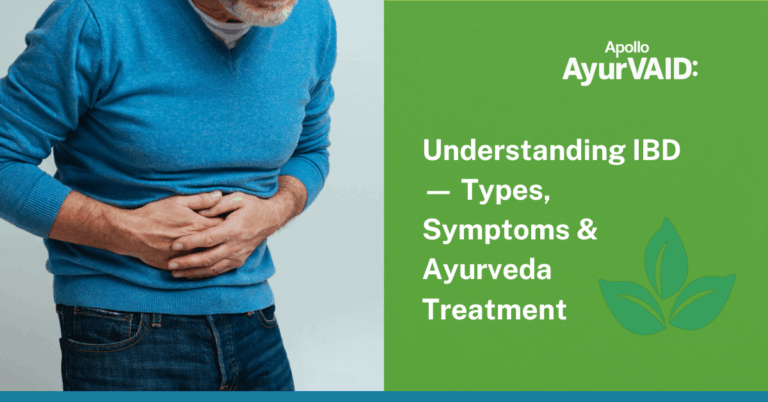Ahara sambhavam vastu rogascha ahara sambhava (Charaka Samhita, Sutrasthana 28/45)
Ahara (Food/Diet) is responsible for the formation of the body and is the root cause of all the diseases.
The theme forWorld Liver Day 2025 – Food is Medicine – echoes this fundamental Ayurveda truth. Today, as liver disorders rise due to lifestyle shifts, this ancient perspective offers practical, preventive solutions. In Ayurveda, Ahara (Diet) is not secondary to treatment. Liver health is not determined by medicine alone- it is shaped each day by Ahara (what is eaten), Kala (when it is eaten), Samskara (how it is prepared), Matra (how much is taken), and whether Agni (digestion) can process it without generating Ama (Inflammation/ metabolic waste retention).
In Ayurveda, the Yakrut (liver) is not addressed after damage shows up in the Liver Profile Test. The liver is said to be the seat of Pitta, responsible for digestion and metabolism. So early signals of imbalance in Liver functions can be evaluated by metabolic dysfunctions like – Mandagni (Low digestive fire), Anaha (Bloating), Aruchi (Loss of appetite), Tandra (Lethargy), and variations in bowel habits, mood, or skin appearance. These signs are not dismissed as minor. They are regarded as early clinical indicators that Agni (Digestive fire) is compromised.
Therefore, early detection begins not with a liver test but with Ahara (Diet) and its effect on digestion. Prevention, too, starts there. This World Liver Day, let’s explore liver health tips, liver care- Ayurveda approach, and how Apollo AyurVAID integrates evidence-based Ayurveda with modern diagnostics to prevent fatty liver and Pitta imbalance.

Understanding Liver Function in Ayurveda
In Ayurveda physiology, the liver is closely linked to multiple processes:
- Transformation of Rasa (Nutrient fluids) to Rakta Dhatu (Blood)
- Storage and regulation of Pitta Dosha
- Pachana (digestion), Mala (converting toxins into waste products) formation, and Meda (Fat) metabolism
Disorders of the liver arise when the function of Agni is impaired and Ama accumulates. Common causative factors include:
- Irregular meal timing and Viruddha Ahara (incompatible food combinations)
- Vegadharana (Suppression of natural urges)
- Erratic sleep cycles
- Mental stress and sedentary habits
Signs such as bloating, bitter taste, burning in the eyes, dull skin, or mood disturbances may appear well before medical parameters become abnormal. For an Ayurveda physician, these are not vague symptoms but markers of dosha imbalance, particularly involving Pitta and Kapha.
Early Signs Not to Ignore
The following are clinical signs that the liver and digestion may be under stress:
- Anaha – abdominal fullness or gas
- Aruchi – aversion to food or anorexia
- Ati trishna – increased thirst
- Mala viplava – foul-smelling or sticky stools
- Daurbalya – unexplained fatigue
- Haridra twak/netra– yellow discoloration of skin and eyes
These are not general symptoms. They represent Dosha imbalance and reduced Agni, and, when addressed early, can prevent conditions like fatty liver, sluggish liver function. Fatty liver treatment in Ayurveda starts with Pathya- dietary changes, seasonal, and lifestyle regimens.
Ahara as Hepato-Protective Chikitsa: Liver Detox
Whether food supports or disturbs the liver depends on its impact on Agni. A warm bowl of moong dal with ghee at noon supports Agni and nourishes Dhatus. The same meal, taken cold and late at night, may create Ama. It is not just the ingredient but its preparation, timing, and suitability that determine whether it becomes medicine or a burden.
Ayurveda Parameters for Liver Detox Diet
Ayurveda does not evaluate food by calories or macronutrients. It uses the framework of Ashta Vidha Ahara Ayatana—the eightfold factors to assess diet:
- Prakriti – natural qualit of the food
- Karana (Samskara) – method of processing or cooking
- Samyoga – combination with other substances
- Rashi (Matra) – quantity, both individual and total
- Desha – geographical and climatic influence
- Kala – season and time of day
- Upayoga Samstha – guidelines of intake based on the individual
- Upayokta – Prakriti (constitution) and state of the person
These determine whether Ahara nourishes Dhatus or generates Ama, burdens Yakrut, and disrupts Pitta metabolism.
Pathya–Apathya in Ayurvedic Liver Detox
Liver-friendly Ahara in Ayurveda is based on Guna (Properties), Rasa (Taste), and effect on Agni. Some Ayurvedic liver cleanse inclusions:
- Tikta rasa (Bitter) vegetables
- Deepana–pachana (Appetite stimulating & digestion-promoting) foods
- Warm, freshly prepared food taken at regular intervals
Items to be avoided:
- Leftover and reheated food
- Dairy with sour fruits or incompatible combinations
- Excessive use of refined oils and fried food
Nighttime heavy meals or overeating after sunset
Supporting Liver Health Through Daily and Seasonal Regimens
Ayurveda doesn’t separate Ahara from Dinacharya (daily routine) or Ritucharya (seasonal regimen). During Grishma (summer), the liver is more vulnerable to Pitta aggravation due to the intense heat. Food should be lighter, mildly spiced, and hydrating. During Sharath (early autumn), purgation or seasonal virechana is prescribed to reduce Pitta and support Rakta Shuddhi (Detoxification)
Adjustments in daily routines—such as avoiding heavy meals late at night, eating when hungry, chewing food well, and ensuring digestion before the next meal—are integral to liver care in Ayurveda clinical practice.
Apollo AyurVAID’s Integrated Liver Care Protocols
At Apollo AyurVAID, liver care is delivered through an integrative clinical lens. The Ayurveda diagnostic tools are applied alongside modern investigations like LFTs, ultrasound, and metabolic screening. Each patient undergoes:
- Detailed Dosha-Agni-Mala-Prakriti-Vikriti (Disease state) evaluation
- Early symptom and risk mapping, even in the absence of LFT derangement
- Clinical dietary counselling based on Samskara, Matra, and Agni
- Use of Pathya Ahara and Viharas as the first line of management
- Ayurveda Panchakarma interventions such as Snehana, Virechana, or Vasti, customised to the disease stage
Importantly, at Apollo AyurVAID, dietary recommendations are not generic. They are personalised according to evidence-based protocol—with clinical tracking of both subjective and objective parameters, including changes in digestion, sleep, gut health, and emotional state, along with modern liver markers.
Conclusion
Ayurveda has always treated food as the first intervention, not the last resort. This year’s World Liver Health theme, “Food is Medicine,” is embedded in this Chikitsa Siddhanta (Treatment principle). The liver’s strength depends on Ahara that is compatible, digestible, and supportive of Agni. Every meal is a healing opportunity—or a trigger. On World Liver Day, let’s choose the former.
At Apollo AyurVAID, this principle is translated into daily practice, where food becomes the most clinically relevant medicine in liver care. Explore Apollo AyurVAID’s personalized liver health programs. Book a consultation with our expert Vaidyas and restore balance the Ayurvedic way.

References
B.R. Tubaki, Saish C. Gawas, Himani Negi, Effect of Ayurveda Management on Liver Cirrhosis with Ascites – A Retrospective Cohort Study, Journal of Ayurveda and Integrative Medicine, Volume 13, Issue 2, 2022, 100508.
![]()
Shankar P, Vijay B, Bhargavi, Rahman M, Anand K, Nampoothiri V, Prashanth. A Case Report on Management of Liver Cirrhosis Using Ayurveda and Integrative Approach of Treatment. Case Reports Hepatol. 2024 Nov 27;2024:1176751.
![]()
Tubaki BR, Gawas SC, Negi H. Effect of Ayurveda Management on Liver Cirrhosis with Ascites – A Retrospective Cohort Study. J Ayurveda Integr Med. 2022 Apr-Jun;13(2):100508.
![]()
Kasar NV, Deole YS, Tiwari S. Systematic review of the concept of Yakrutotpatti (embryology of liver). Ayu. 2014 Jan;35(1):5-8.
![]()
Rastogi S, Rastogi R. Ayurvedic intervention in metastatic liver disease. J Altern Complement Med. 2012 Jul;18(7):719-22.
![]()






